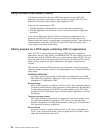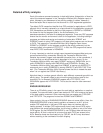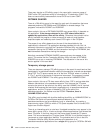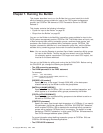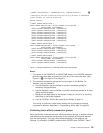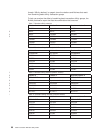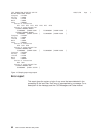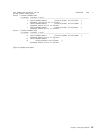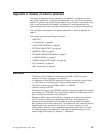
HEADER statements
The HEADER statement is specific to the Builder, and is not a CICSPlex SM
statement. It is produced by the Reporter, and is needed by the Builder to create
unique transaction group names.
The Reporter generates temporary transaction group names (for example,
CW.00000001 and TS.00000001) while it is running, and stores these names in the
output data set for that run. However, the Builder can take several Reporter data
sets as input, and may therefore get the same transaction group name from
different input data sets (describing different affinity transaction groups).
To ensure that the transaction group names are unique, the input transaction group
names are qualified by the input data set name. To do this, when the Builder reads
a HEADER statement (the first line of an input data set), it obtains the data set
name from MVS. The HEADER statement is vital because without it the Builder
cannot detect the change from one input data set to another.
If you omit a HEADER statement, the Builder may generate error messages or add
transactions to the wrong group, and give incorrect line numbers in the error report
and an incomplete report of data sets processed.
Output from the Builder
The Builder outputs a file containing a set of definitions for combined affinity
transaction groups, and a report listing the combinations that occurred.
Combined affinity transaction group definitions
Before each definition of a combined group in the output file, the Builder adds a
commented-out REMOVE command for that group. If you already have combined
groups of the same name, check that it is appropriate to delete them before
uncommenting the REMOVE command.
The name of each combined affinity transaction group is derived from the
alphanumerically first transaction identifier in the combined group. For example, if
ABCD was first, the transaction group name would be ABCDGRP.
Note: For CICSPlex SM, the name of each combined affinity transaction group
must be unique.
For example, Figure 11 on page 59 shows the set of combined definitions that
correspond to the basic definitions in Figure 9 on page 47, assuming that a MATCH
filter of LUNAME, a STATE of ACTIVE, and a CONTEXT of CICPLEX1 was
specified on the PARM statement.
58 CICS Transaction Affinities Utility Guide



